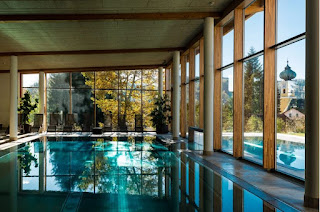Complete Guide to Passive House Windows
Many homeowners are perplexed as to why their energy expenses keep rising month after month. Because of incorrect installation, damage, or old components, you may be losing money via a lack of energy efficiency. With passive house windows, you may solve this issue. A set of standards for energy-efficient windows with Wood Curtain Wall that sets a number of requirements for components. Following this guideline may help turn passive windows become a crucial aspect of your home's overall energy efficiency.
What Kind of Standard
Requires? For Passive House Windows
Passive house windows
don't refer to any specific kind of window. Rather, it refers to a standard to
which windows may be manufactured. Multi-layered glass and airtight
installation are key components of this standard, which combined increase solar
gain and decrease heat loss. It's a combination of four things that makes
passive windows so effective.
Glass with a
low-emissivity coating (low-E) reduces the quantity of UV and infrared light
that may flow through. They don't interfere with sunlight, but by reflecting UV
and IR radiation, these coatings keep furniture from fading and keep the
temperature under control.
High-Quality Frames
Your home's insulation
and heat transmission are improved by using durable and low-maintenance frame
materials. When it comes to vinyl window replacements, we're the experts at
hawkeye windows. We normally propose these frames as the best option for
windows that are more energy efficient.
Multiple Panes with Gas
Fills
Impact resistance,
better insulation and soundproofing are all benefits of energy efficient
windows, which typically have two or three panes of glass. These gaps between
panes may be filled with nothing but air. Noble gases like argon and krypton,
which are harmless, odorless, and colorless, are used in more advanced designs.
Insulation may be improved even more with these alternatives.
Warm Edge Spacers
To keep the panes of a
window apart from one other, spacers are used. Spacers made of nonmetallic or
composite materials may also help to decrease heat transmission from the
window's perimeter.
Benefits of a Passive
House
Creating a passive
house begins with the installation of Passive House Windows. Passive
dwelling has several advantages for both the environment and the homeowner.
Energy Cost Savings
Up to 90% less energy
is used to heat and cool homes that meet passive house requirements compared to
conventional homes. Replace single-pane windows with energy-efficient models
and save as much as $465 annually, according to the Department of Energy.
Improved Air Quality


Comments
Post a Comment